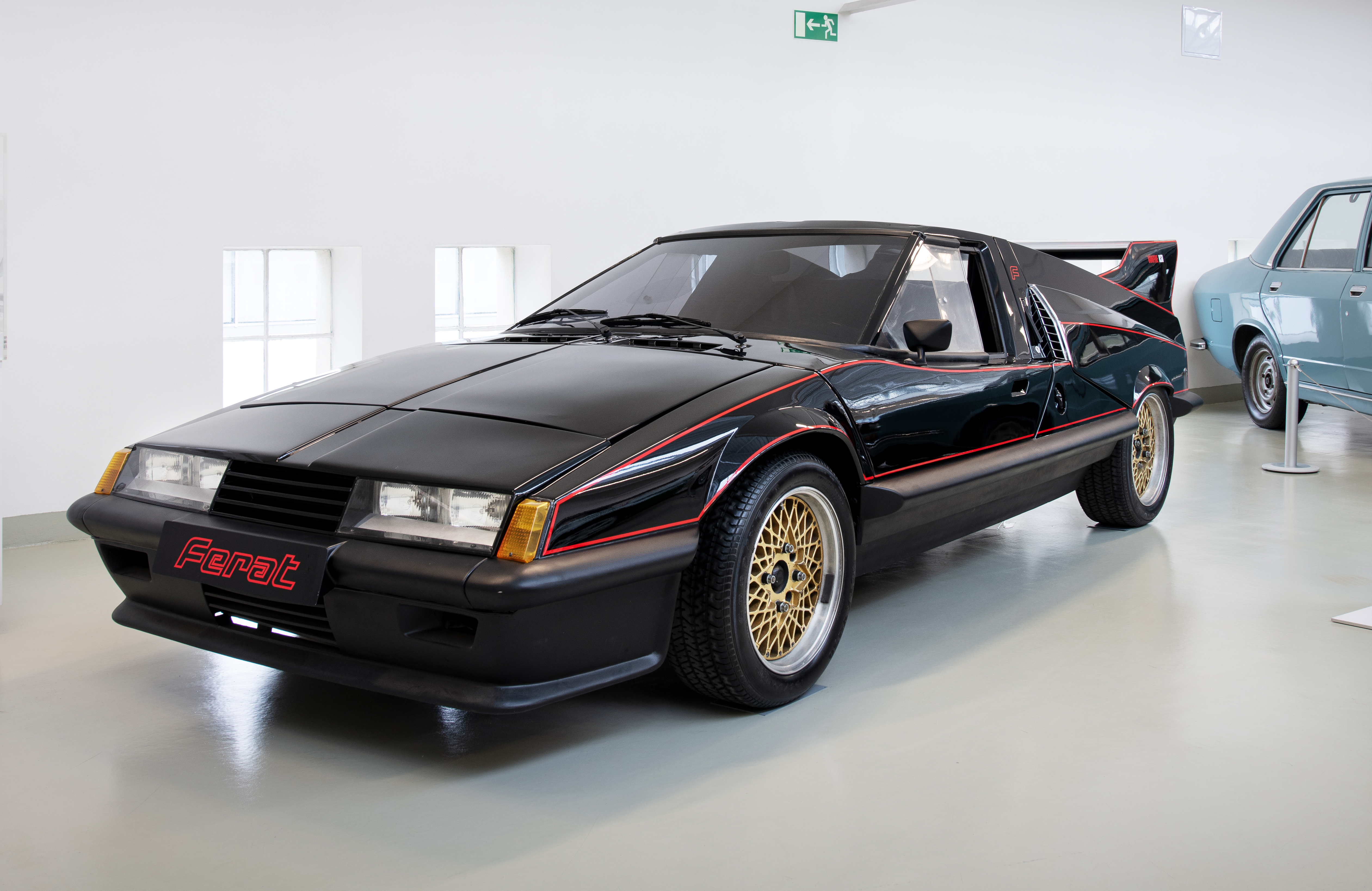ŠKODA 110 SUPER SPORT
It’s fair to say that the ŠKODA 110 SUPER SPORT, which Stanislav Cinkl spent a long time developing, marked the end of the Magnificent Seven era. The car made its first appearance in the May Day parade at Kvasiny in 1971, and on the 6th of May the then head of the company’s testing department handed the car over to Cinkl (as a birthday present) to get the car approved by all the specialist teams. A period of tests, modifications and even public presentations followed. “After the car was handed back to the Mladá Boleslav plant, the aim was to make three more cars with front-facing OHC engines from 1,498 to 1,772 cc from the ŠKODA 720, with a strengthened rear axle designed for extra stress and a gearbox taken from the eight-cylinder Tatra 603. Suppliers of axles and brakes had also been selected. However, political pressure once again meant that the project’s chief supervisor had to leave his post, and so the Super Sport never got beyond the stage of a single prototype,” recalls Stanislav Cinkl.
 In the 1980s, Stanislav Cinkl modified the only prototype of the ŠKODA 110 SUPER SPORT to turn it into the ŠKODA FERAT for The Ferat Vampire movie.
In the 1980s, Stanislav Cinkl modified the only prototype of the ŠKODA 110 SUPER SPORT to turn it into the ŠKODA FERAT for The Ferat Vampire movie.
With a team of collaborators, he prepared the coupé for an attempt to break the domestic speed record in the small-engine class. For their attempt they chose a stretch of road in a forest between Týniště nad Orlicí and Třebechovice. “On the first run we hit a speed of 219 km/h, which would have been a new Czechoslovak record, but on the way back to Týniště we only managed 212 km/h, so the average of both runs fell short of the record.”
In 1973, Cinkl drove this prototype in the prologue of the Šumava Rally in Klatovy. This was by no means his first experience with the world of fast wheels. He started out in rallying in 1965 as a co-driver, later building his own car nicknamed the “jumping 1000” and based on a ŠKODA 1000 MB sedan. He only quit his independent and self-funded racing career in 1970, when the family budget could no longer support it. By the way, he got his slightly crash-damaged “MB”, which he modified for the sport of autocross that was just starting out in Czechoslovakia at the time, in exchange for a hand-renovated 1904 Laurin & Klement CCD motorcycle, which he donated to the ŠKODA Museum.
 ŠKODA FERAT
ŠKODA FERAT
At the ŠKODA Museum, Stanislav Cinkl’s description of his relationship with the ŠKODA 110 SUPER SPORT takes place in front of the famous black FERAT. This was created in the early 1980s by modifying the only unit made of the original light-coloured coupé. The stunning looks of the main prop in Juraj Herz’s horror film The Ferat Vampire (released on 1 May 1982) was designed by Oscar-winning film designer and racing driver Theodor Pištěk. When some of the scenes with the car were filmed, Stanislav Cinkl crouched under the dashboard while the camera focused on the actress behind the wheel, Jana Břežková. In other shots he drove the car himself. According to the script, the racing car was powered by fresh human blood instead of petrol, and one scene that fell foul of the censors featured highly naturalistic shots of real cattle entrails that were arranged under the coupé’s bonnet by the world-famous animator and director Jan Švankmajer.
 The modified ŠKODA 110 SUPER SPORT during filming of The Ferat Vampire
The modified ŠKODA 110 SUPER SPORT during filming of The Ferat Vampire


























